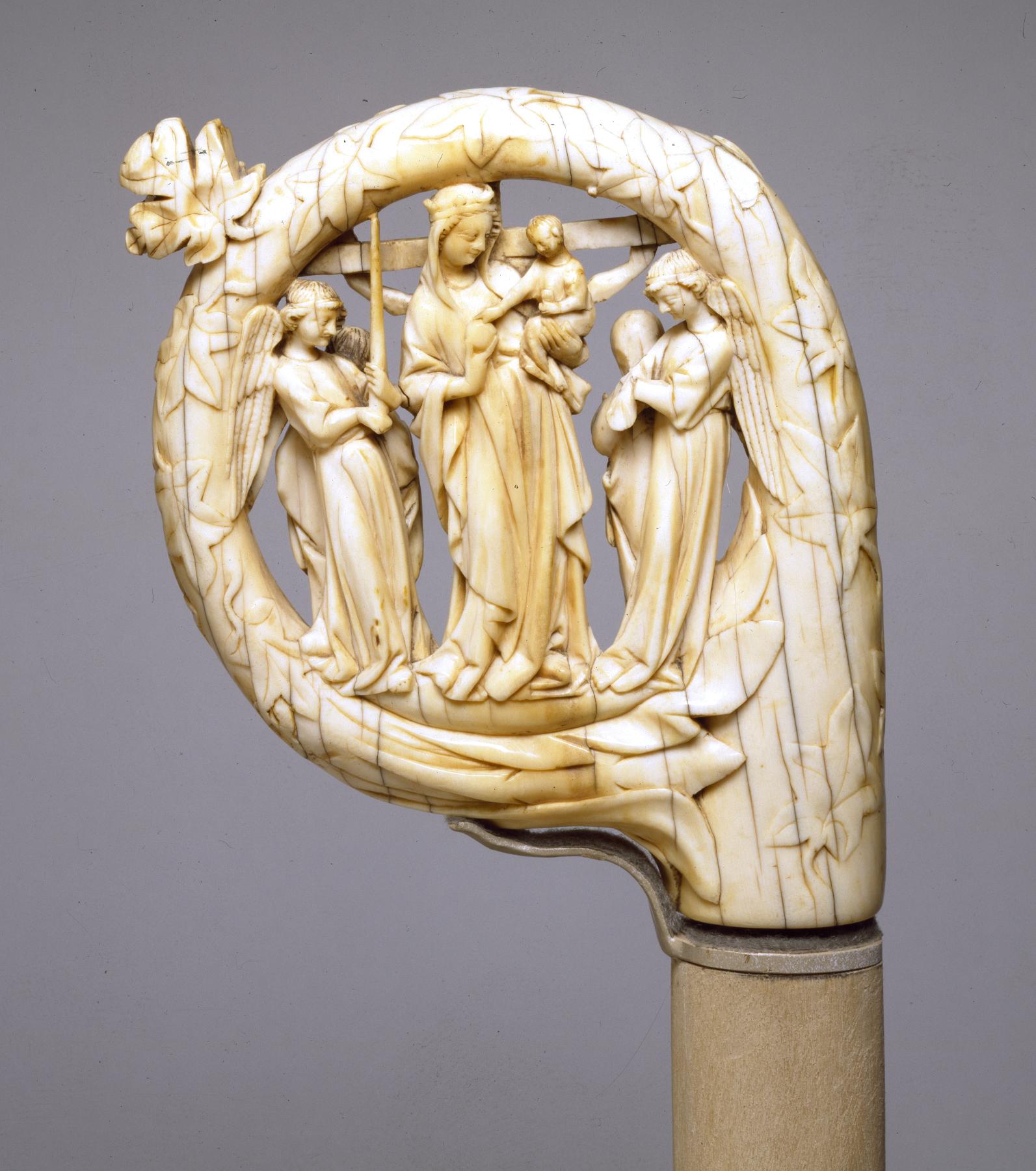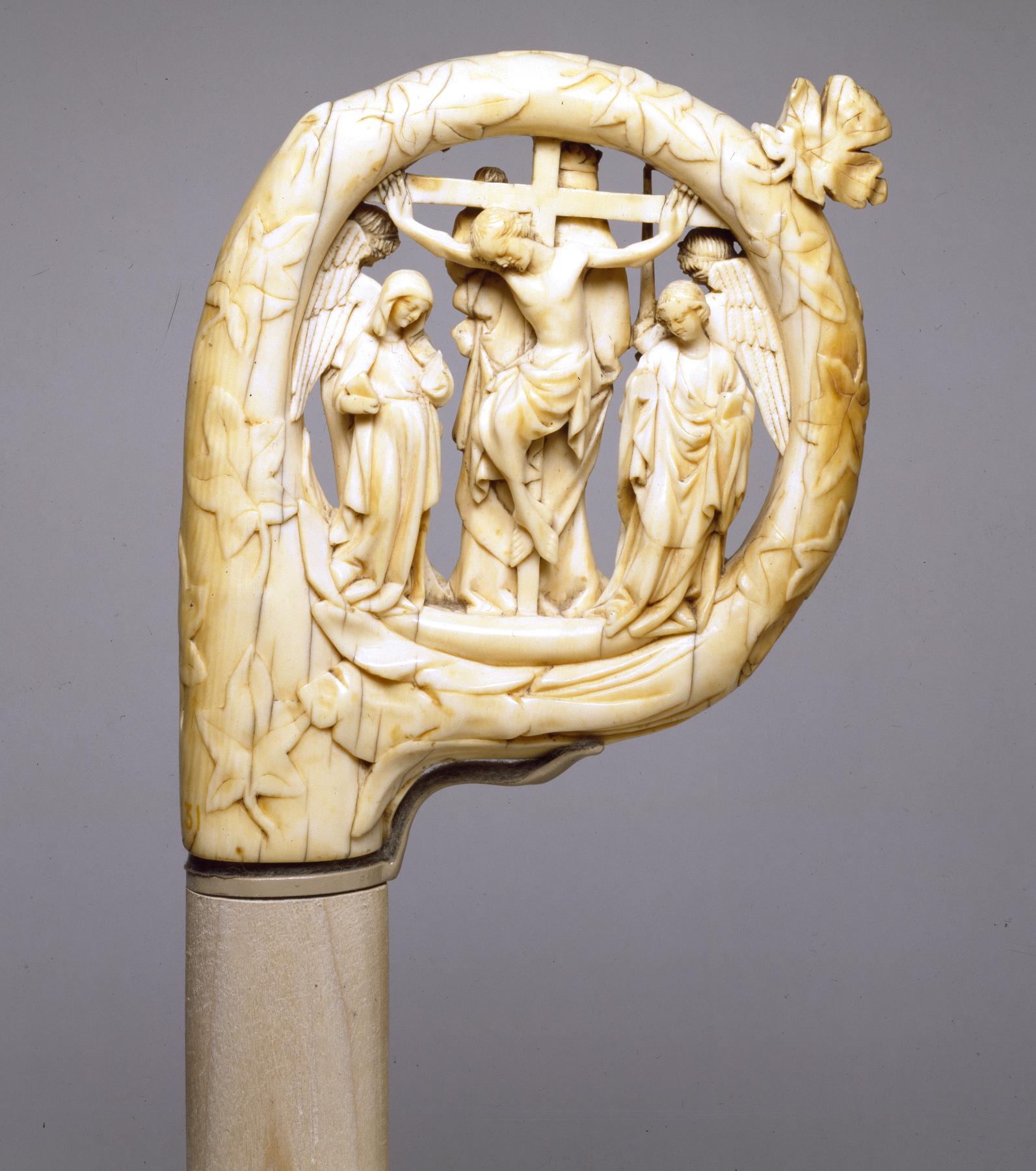Crozier with the Virgin and Child, and the Crucifixion
(Medieval Europe )
Croziers, or staffs of office in the form of shepherds' crooks, were carried by both bishops and abbots. Carved on one face of the crozier are the Virgin and St. John flanking the Crucified Christ; on the other, the Virgin holds the Christ child between two candle-bearing angels. The fine carving of the figures is complemented by such details as the delicate vine leaves around the edges of the scenes. A few ivory croziers are known from this period, but the majority were made of pieces of rock crystal and enameled and gilded copper.
Provenance
Provenance (from the French provenir, 'to come from/forth') is the chronology of the ownership, custody, or location of a historical object. Learn more about provenance at the Walters.
John Edward Taylor, London [date and mode of acquisition unknown]; John Edward Taylor Sale, London, July 1, 1912, no. 82; Seligmann Brothers, New York [date and mode of acquisition unknown]; Henry Walters, Baltimore, 1913, by purchase; Walters Art Museum, 1931, by bequest.
Exhibitions
| 1999-2000 | Vive la France! French Treasures from the Middle Ages to Monet. The Walters Art Gallery, Baltimore. |
| 1997 | Images in Ivory: Precious Objects of the Gothic Age. The Detroit Institute of Arts, Detroit; The Walters Art Gallery, Baltimore. |
| 1983-1984 | Ivory: The Sumptuous Art. The Walters Art Gallery, Baltimore. |
| 1966-1967 | Treasures from Medieval France. The Cleveland Museum of Art, Cleveland. |
Geographies
France, Paris (Place of Origin)
Measurements
5 5/16 x 4 9/16 x 1 in. (13.5 x 11.6 x 2.6 cm)
Credit Line
Acquired by Henry Walters, 1913
Location in Museum
Accession Number
In libraries, galleries, museums, and archives, an accession number is a unique identifier assigned to each object in the collection.
In libraries, galleries, museums, and archives, an accession number is a unique identifier assigned to each object in the collection.
71.231




